Visiting The Valley Of Fire In Nevada
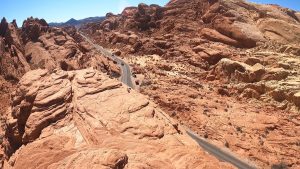
“Because when you stop and look around,
this life is pretty amazing” – Dr. Seuss
“Amazing” is a great way to describe the Valley of Fire!
You would never expect that just 50 miles northeast of the bright lights and crowds that make up the Las Vegas Strip, is an area so breathtaking and colorful, you forget you are even in the Mojave desert. Welcome to the Valley of Fire – a Nevada State Park of epic proportion!
The Valley of Fire was formed about 150 million years ago, during the Jurassic Age, when the ocean floor began to rise, exposing the land to wind, creating a “shifting and shaping” of the sandstone. A great example of how the shifting winds shaped the sandstone, can be seen at the “Beehives”. Here, you can see the different striations of sand as the winds would shift, creating different layers of sandstone.
Among the first visitors to the Valley of Fire were the Anasazi Pueblo. They were able to hunt, but without water, they were unable to stay. You can see evidence of these early visitors in the petroglyphs throughout the park.
By 1865, Paiute Indians were living in the area. Sometime during the 1890’s a Paiute Indian named Mouse, was escaping the law, and ended up hiding out in a basin in the Valley of Fire. By the late 1890’s he was eventually tracked down and shot. The basin he was hiding out in went on to become known as “Mouse’s Tank”.
In 1935, the Valley of Fire was established as a state park, and is now not only one of the most beautiful state parks in Nevada, it is also the oldest!
Come along with us as we explore some of what The Valley of Fire has to offer!
The Valley of Fire is a 40,000 acre park with two entrances. You can enter from the east or west. We were coming from Las Vegas and took I15. This puts you on a two lane desert road that will bring you in through the west entrance.
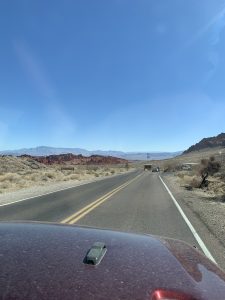
At the gate, you will pay an entrance fee (per vehicle), plus an additional fee if you choose to camp inside the park.
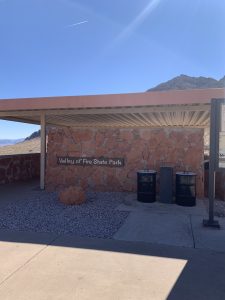
Camping inside the park will afford you the opportunity to view amazing sunsets and see firsthand what they mean by the land looking as if it is on fire when the sun hits the rock just right. If you choose to only spend the day (as we did), don’t worry, there is still plenty that you can see and do in a day.
The Beehives
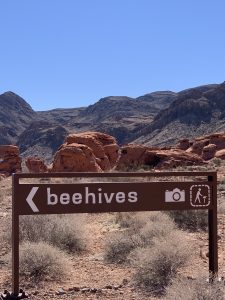
By entering through the west, on the Valley of Fire Road, the first feature we came to was “The Beehives”. These are a great example of the cross-bedding that happens due to the constant shifting of sand and wind.
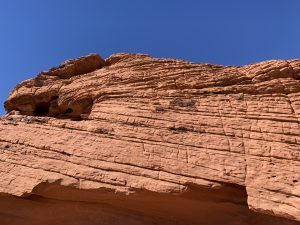
The shapes that formed look exactly as what the name says – they look like beehives!
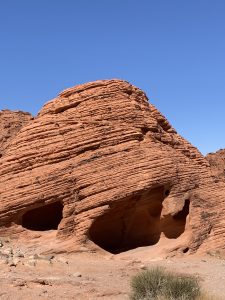
Here, you can park and hike around a little bit. You can climb in and on top of the hives.
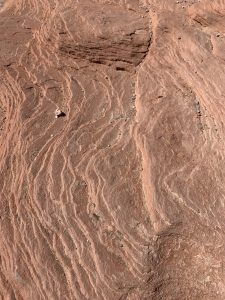
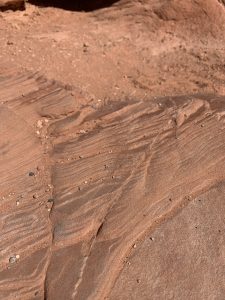
You can see the ripples in the sand, which I thought looked pretty cool also. Speaking of the sand and soil, throughout the park, you will come across black patches on top of the soil. These black patches appear crusty or crunchy. These are a combination of algae, lichen and moss that help hold the soil together, and provides nutrients for plants. By walking on it, it is not only destroyed, but can take up to 250 years to recover…so, if you see it, do not intentionally walk through it.
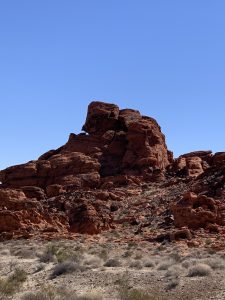
There is also a small campground adjacent to the beehives. This is a group campground, and requires a 48 hour advance reservation to use.
Petrified Logs
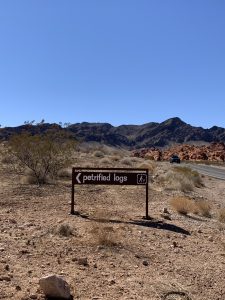
Our next stop was the Petrified Logs, just a short drive up from the Beehives. We pulled into the turnout for this feature, and at first we didn’t see much of anything.
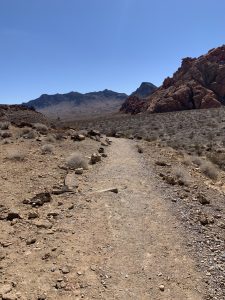
There is a trail to the right, and if you follow it around, it will bring you to several petrified logs. The trail is a loop, and will bring you back around to where you parked.
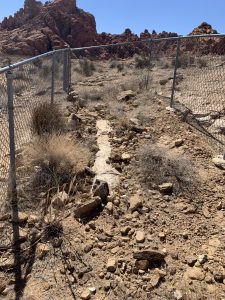
These logs were once part of a forest several miles from their current location – millions of years ago! The fallen trees were carried here by flood waters and became buried beneath sand, silt and other sea deposits.
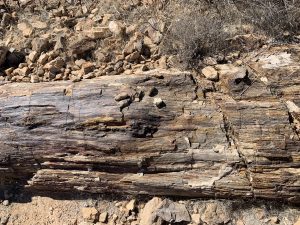
As the logs remained underneath all of the deposit, they slowly turned to stone. These petrified logs are from ancient pines that grew during the Age of Reptiles (approximately 150 million years ago!).
Visitor Center
Following along the Valley of Fire Road, just beyond the Petrified Logs, you can either continue straight (this will take you to the East entrance as well as a few more features), or you can turn left onto White Domes Road. We chose to turn left.
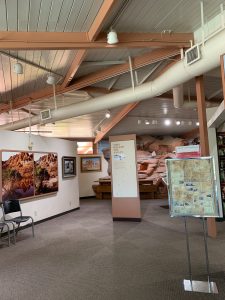
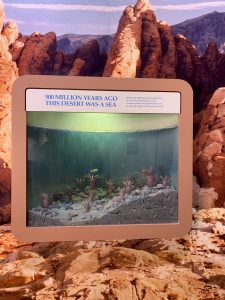
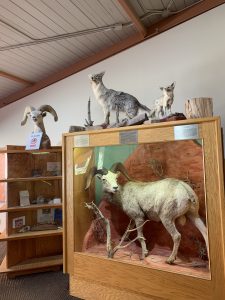
Our first stop on White Domes Road, was the Visitor Center. Here, you can read about, and visualize, the Valley of Fire from its beginning. You can also use the restrooms, or grab a bite to eat or drink, and buy a souvenir from the gift shop.
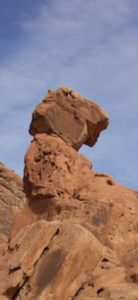
Balancing Rock is also located at the visitor’s center. It is one of the craziest natural formations of rock, formed millions of years ago, the rock at the top appears to be ready to fall at any moment, yet remains where it is. You are able to hike up to Balancing Rock, but due to how fragile the rock is, they ask that you refrain from climbing on it.
Mouse’s Tank
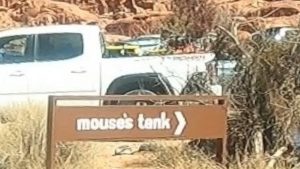
Our next stop was Mouse’s Tank. As I mentioned earlier, Mouse’s Tank got its name from the Paiute Indian named “Mouse”, when he hid within the rocks and basin trying to escape capture.
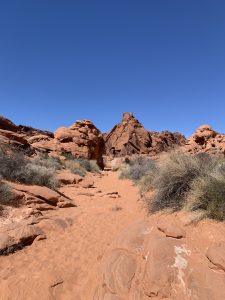
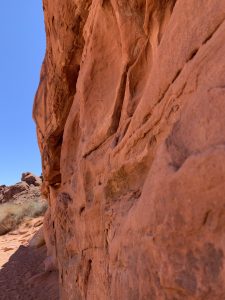
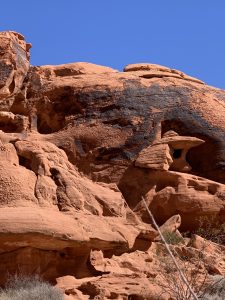
Mouse’s Tank offers a short hike (less than a mile out and back) through the basin. Though we did not hike all the way out (this feature had quite a few visitors when we stopped, and we were avoiding crowds where we could), we did hike about halfway – we still got some great views and a feel for the basin area.
What we did miss by not doing the whole hike, were the petroglyphs at the end. Next time, I think we will do the whole hike!
Mouse’s Tank was also a great spot for lunch! We had made sure to pack a lunch, snacks and plenty of water for this adventure. Across the road from Mouse’s Tank is a great little picnic area. There are tables, awnings, grills (I think), and some hiking trails that lead up into the rock formations. It is also about the halfway point to where we were headed.
Rainbow Vista
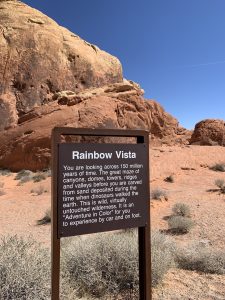
After a quick little lunch, we headed a little further up the road to a pullout. This is Rainbow Vista! Rainbow Vista offers a short one mile hike, along with the perfect spot to take one of the most popular photos in Valley of Fire….the long and winding road.
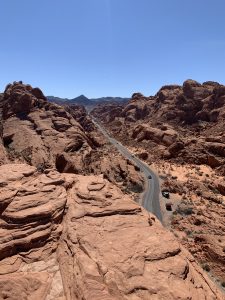
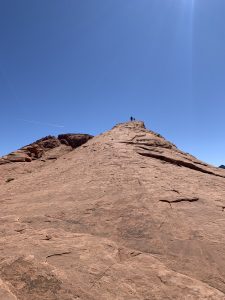
Here, we climbed to the top of an overlook, took our photo of the road, but also took in the absolutely gorgeous view from up above. It is easy to see how this spot got its name – all of the different colors in the sand and stone!
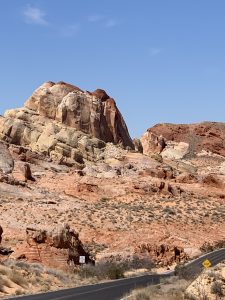
Fire Wave / Seven Wonders
This was another attraction that was really crowded when we went. It is possibly, also the most popular attraction. Although we stayed on the main platform area, there is a trail, almost a 2 mile loop, that will take you through canyons and past caves.
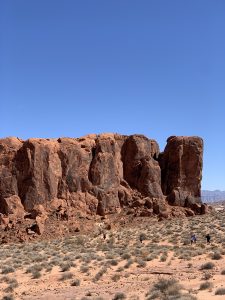
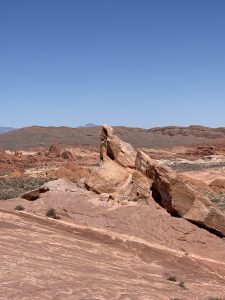
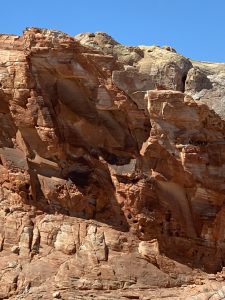
Parking was hard to find, and we ended up parking a little way up the road and walking, but the views were worth it, even without the hike.
In the future, we will arrive earlier, and plan to do the hike. This attraction does close down during the summer months.
White Domes Loop
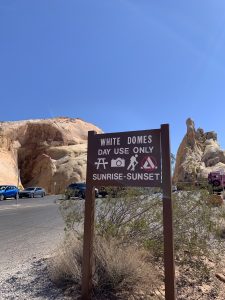
Our last stop was at White Domes Loop. This is the end of the road, and what a great way to end it!
We chose to do the hike through this area.
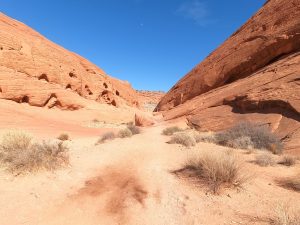
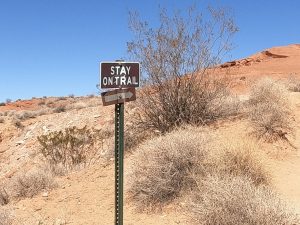
The hike through White Domes, takes you through beautiful basins, slot canyons and even through an old movie set (or what is left of it anyway).
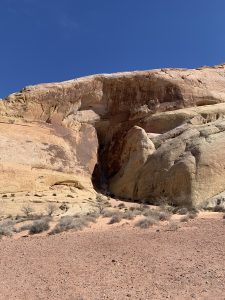
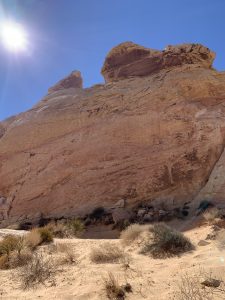
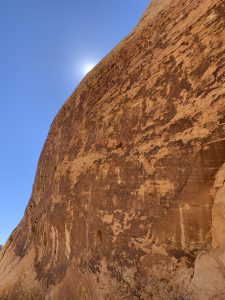
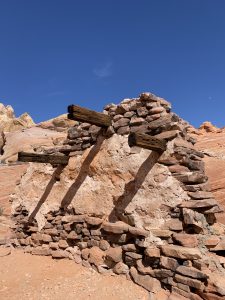
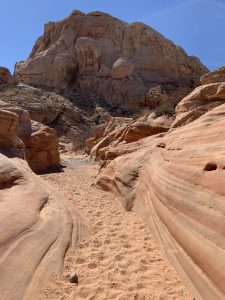
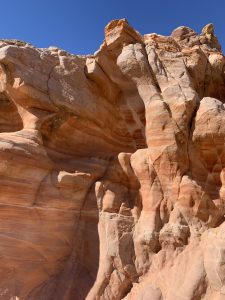
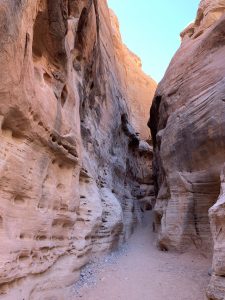
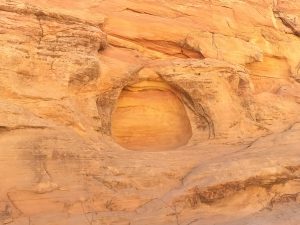
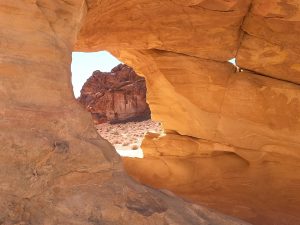
The length of the hike is just over a mile, and loops back around to the parking lot. If your day allows, this is a good hike to take.
After leaving White Dome, we got back on the road and headed back towards the west entrance. We made note of the attractions that we will want to spend more time at next time, as well as attractions that we didn’t get to see at all (the section of Valley of Fire Road between the visitors center and the east entrance).
All total, we spent about four and half hours at the park. It was a great opportunity to see what is there, and what will require maybe a visit all on its own. We will definitely be back!
If you are considering a trip to the Valley of Fire, remember to bring LOTS of water and plenty of sun protection, as there is little to no shade, and it gets really hot, really fast. If you have a few days, but are not camping inside the park, it is a good idea to drive through and check out all of the features, figure out which ones interest you the most, and then go back and spend time at those features. The hikes are worth taking, as they expose you to so much more that you cannot see from the parking areas.
However you plan to do the Valley of Fire, have fun and enjoy it, it truly is an amazing place to visit!
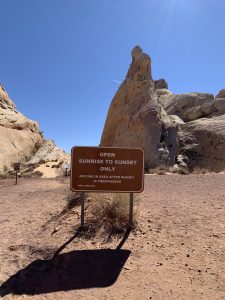
4 Comments
Bobby
Good post, Kath! Love that place- it’s like a huge Gardern of the Gods. I ran the Valley of Fire marathon several times, and it is beautiful. Hope to see y’all soon.
Kathy
Thank you! I agree, it is a beautiful place! We didn’t even see all of it! A marathon there would be amazing – I am impressed! 🙂
Char
Thanks for mentioning the importance of staying OFF the biocrust!! 🙂
Kathy
Another reason why it is always important to stay on trail! 🙂